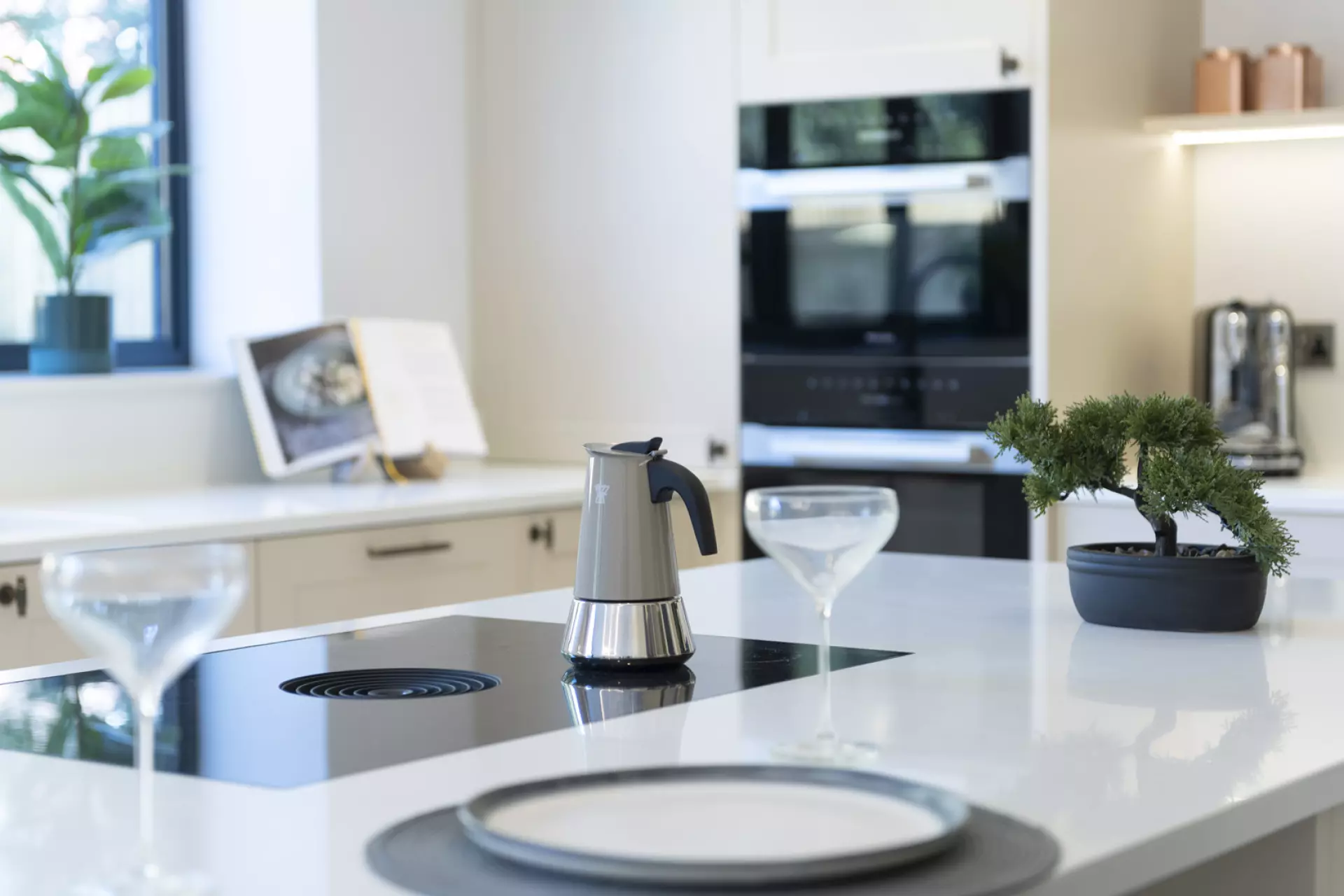Induction hobs versus gas hobs: Who will win?
When you’re buying a luxury new home, the kitchen is a big consideration.
Do I want an island?
Is there enough walkway space?
And of course, what type of cooker is right for me?
Essentially, this last question boils down to two main options: induction hobs or gas hobs.
In the blog post, we’re going to delve into the reasons why induction hobs truly are the way to go. That way, you can tick one important consideration off your list.
But first…
What’s the big difference?
Induction hobs have actually been around since the 1970s, but they’ve only recently gained a bit more ground in popularity as kitchen designers have seen their potential.
An induction hob uses electromagnetism to heat up. When the hob is switched on, a high-frequency alternating magnetic field is created between the element and the pan. This means that only your pan heats up, rather than your entire hob.
Most people are familiar with gas hobs. You turn on the hob and gas is released through burner rings, which ignite by the lighter spark. They’re definitely the more recognisable of the two.
But let’s look at how they compare…
The speed you need
It’s true that gas hobs are faster at heating up than induction hobs, as they have a direct flame. However, this doesn’t mean they heat food up quicker. In fact, induction hobs are more efficient at using and distributing the heat that they produce.
In a recent test by Which?, the fastest induction hob took less than four minutes to heat a big saucepan of water while a gas hob took 8.5 minutes. Saving around five minutes is a big deal when time is of the essence!
Energy efficiency
We’re all becoming far more aware of energy usage when it comes to our purchasing decisions and daily lives. And when it comes to energy usage, induction hobs are the clear winner. They are far more efficient, as they use all of the heat that’s generated. And because they cook faster, they save more energy in that sense too.
Although gas is easily controlled, there can be a significant amount of wasted heat that escapes up the sides of the pan.
Easy cleaning
Let’s face it, a gas hob can be a nightmare to clean. It’s easy to knock out burners and reaching all the areas you need to can be almost impossible, even after you’ve lifted off all the removable parts.
So when it comes to cleaning, it’s another win for the induction hob. As induction hobs are completely flat, cleaning them is as simple as a quick wipe after use. You won’t have to lift anything out of the way and there are no places for food to get stuck into. It’s as simple as wiping down a worktop.
Safety first
Gas hobs have an open flame that can be a fire hazard. How many people do you know who have accidentally left the flame on?
Induction hobs don’t have this hazard. Firstly, there’s no open flame to set anything alight, even with a rogue tea towel. It will only be the magnetic surface that will transfer heat, so everything around it will stay cool.
So even if you accidentally turned the induction hob on, nothing will even heat up unless a magnetic pan is put on the hob. And if the pan is removed, the induction hob will switch itself off after a few seconds.
More control
When you’re cooking, heat control is everything. And we’ve all used gas hobs that seem to have a life of their own.
On the other hand, induction hobs are more reliable when it comes to control.
Using an induction hob typically involves three steps:
Turn the hob on
Select the zone you want to use
Dial in the temperature setting
Admittedly, this does take a few seconds longer than with gas, but once it’s set up it’s easy to keep control of as it will be exactly the same temperature every time you use it.
The aesthetics
When it comes to our kitchens, aesthetics matter. And induction hobs tend to be associated with modern, sleek-looking kitchens. The design is simple and minimalist, which is important for those who want a contemporary look.
On the other hand, gas hobs tend to fit in with more traditional-looking kitchens, as they’ve been around for far longer.
Key takeaways
Induction hobs can heat a big saucepan of water in less than four minutes, compared to 8.5 minutes for a gas hob.
Induction hobs use less energy overall than gas hobs, as they use all of the heat that’s generated.
Induction hobs are easier to clean – simply wipe the surface the same as you would your kitchen worktop.
No open flame puts induction hobs ahead when it comes to safety.
If sleek and modern is your requirement, induction hobs take the lead as they fit with a contemporary look.
All Brookworth Homes properties are fitted with induction hobs to give your kitchen the modern look and the efficiency you need.
